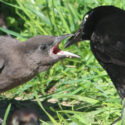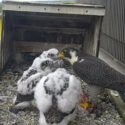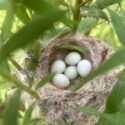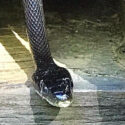 Photo ©
Keith Williams
Photo ©
Keith Williams

Grackles Galore
We recently uploaded 5,249 nest records of Common Grackles, Great-tailed Grackles, and Boat-tailed Grackles. These span the years 1919–2008, thus adding valuable historical information about these iridescent blackbirds to our long-term database. We thank the Nest Quest Go! participants for finishing up this project so quickly.
If you’d like to help transcribe more historical paper records into useable data for NestWatch, you can join our current active project Wrens. Every little bit helps save a piece of ornithological history!

Attend a Free Webinar
Registration is now open for a free webinar on February 20, 2024 at 1:00 p.m. EST hosted by Wildlife Habitat Council. NestWatch leader Robyn Bailey will discuss the value of building artificial nesting structures on corporate sites and the habitat and nesting needs of various avian species. Although the primary audience will be corporate conservation sites, anyone is welcome to join in. Register here.
Interested in learning more about Wildlife Habitat Council or how you can incorporate NestWatch into your company’s stewardship program? Check out this article from 2020 highlighting some great examples.

Data Resources for Analysts
NestWatch staff recently published a data paper in Ecology to aid researchers in utilizing the project’s raw dataset. The data paper explains all fields and codes used in the database and is necessary for interpreting the NestWatch dataset. Researchers can download the paper here (see supporting information for metadata).
Speaking of the raw dataset, we have also just completed our annual update to the NestWatch Open Dataset which brings in the 2023 data. Analysts can download the full dataset from this webpage or from Mendeley Data, where it has a DOI for citation.

NestWatch Data Aid in Snake Study
The latest research paper to include NestWatch data is not your average avian study. Your data contributions were recently put to use in an examination of gray ratsnake climbing behavior. The study authors were interested in which factors correlate with ratsnake climbing forays, and they wondered if the timing of nests (and thus a seasonal abundance of eggs and nestlings) was an influence. Turns out, not so much. Read more on this month’s blog.